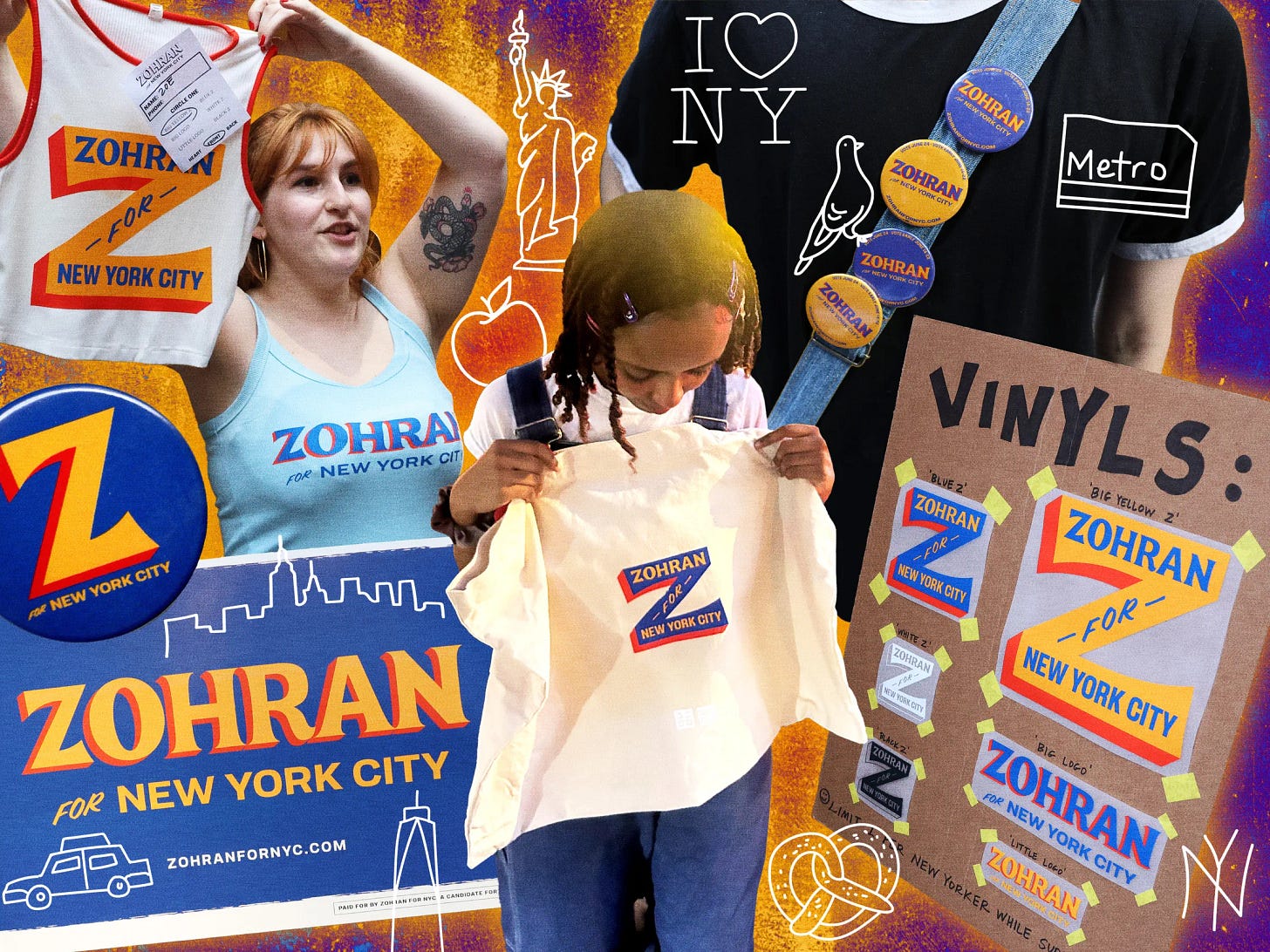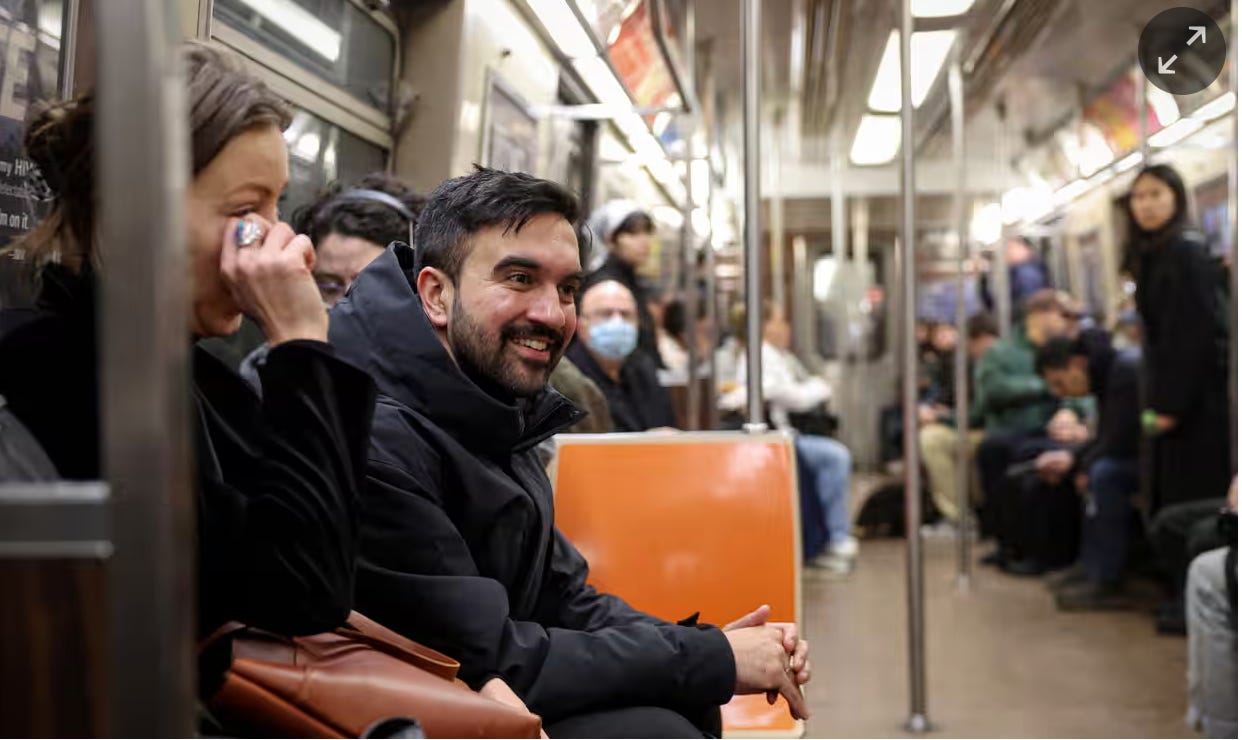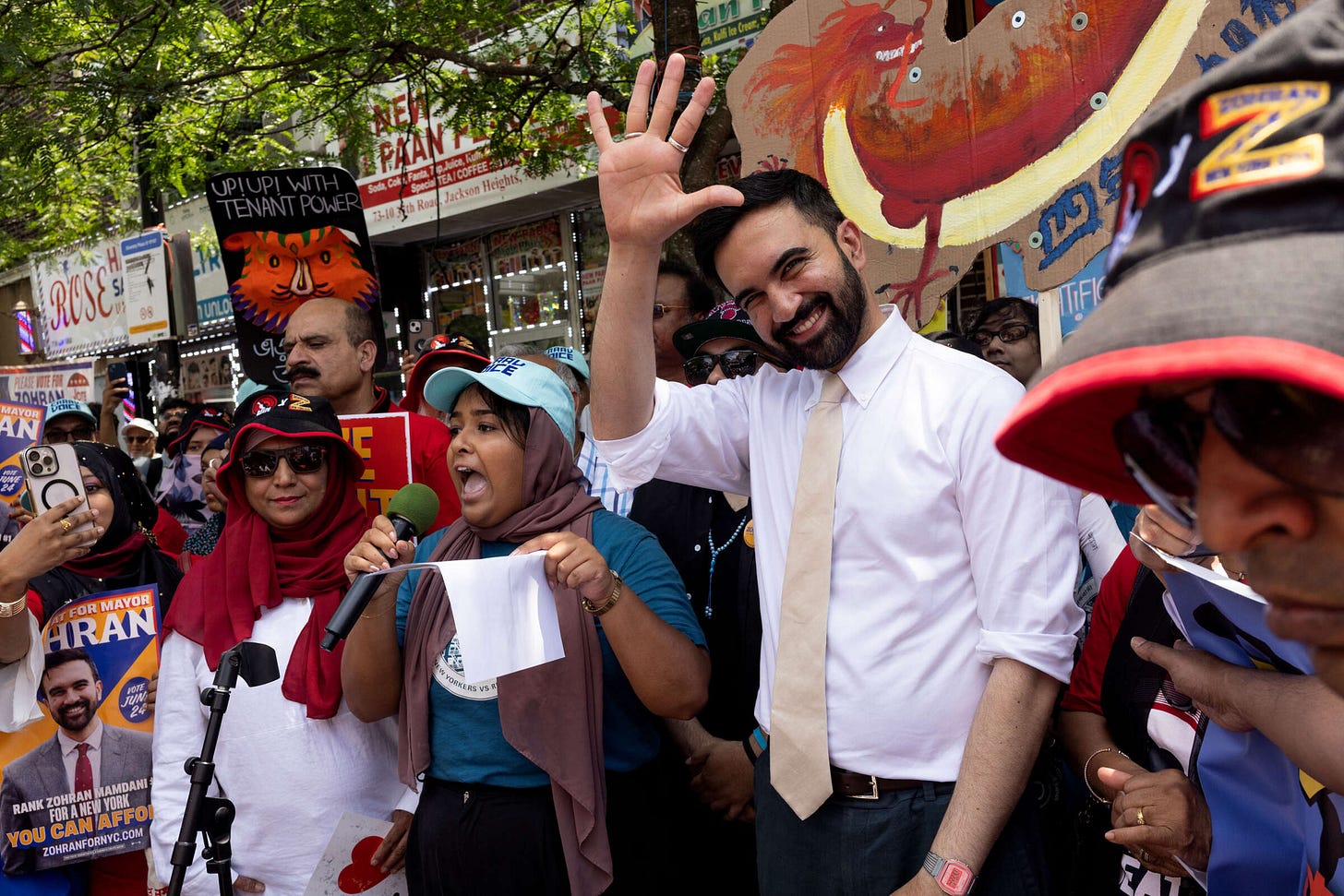Zohran Is A Winner, Not A Unicorn
What an excellent campaign for the NY primary tells us about the future of politics
Zohran Mamdani’s primary win was remarkable — but not for the reasons most headlines suggest. Yes, he’s charismatic, principled, and politically gifted. Yes, he was up against a tidal wave of establishment money and misinformation. And yes, he won anyway.
But what’s most important — and most replicable — is how he won: through community-rooted tactics, nimble use of people-centered media, and a campaign ecosystem that behaved more like a fandom than a traditional political operation.
Mamdani both is and isn’t a unicorn. As a person, he’s singular — a one-of-one blend of culture, clarity, and rizz. But the tools he used, the messages he deployed, and the relationships that sustained his win? Those can and must be built around far more than individual candidates.
Because if we want to win power — and wield it — we need infrastructures of trust and attention that last longer than a news cycle. We need everyday fandoms, not just electoral miracles.
The Kryptonite, Revisited
In an recent piece, I described our “kryptonite” as the illusion of control — the temptation to hold onto perfect message discipline, linear comms plans, and consultant-tested talking points instead of building narrative environments that scale through participation, emotion, and trust.
We choose control over strategy that scales. And we lose.
Too many progressive campaigns still fall back on command-and-control tactics — slow sign-offs, top-down messaging, media built for funders rather than people. We fear what might happen if we let things get too messy, too creative, too alive. So instead of investing in cultural power, we retreat to PDFs and polite threads.
But that’s not how people change. And it’s certainly not how someone wins a citywide race for New York Mayor in the face of $5.4 million in fear-mongering attack ads calling them “Radically Wrong” for the job.
Mamdani didn’t fight with “correct facts.” He countered it with persistent presence — online and offline — and with a narrative about who he was that voters already knew to be true. He didn’t wait for The New York Times to back him (in fact, they along with The Atlantic, tried their best to smear him). He built a base that trusted him because they’d seen him, heard from him, and shared space with him — long before they walked into a voting booth. The design teams producing iconic imagery and merch, video crews cranked out quality content at a near constant clip to compete with misinformation and distraction in our feeds, the candidate struggle (wholesomely, authentically) but delivered content in multiple languages in one of the most linguistically diverse cities in the country - it all adds up to a fundamentally different approach to the standard Democratic campaign orthodoxy.
This is the shift we need to make: from message control to emotional connection. From campaigns as short bursts to campaigns as expressions of a living media strategy. From top-down persuasion to bottom-up participation.
Mamdani wasn’t bulletproof. But he wasn’t brittle either — because his campaign didn’t depend on institutional approval. It was resilient because it was rooted.
What Actually Worked
What made Mamdani’s win possible wasn’t just consistent organizing or effective messaging. It was cultural intelligence — the ability to read the emotional and material conditions of the city, and then craft a campaign that told the truth people were already living.
While establishment liberals were wringing their hands about “governance” and “tone,” Mamdani understood that this election wasn’t about technocracy — it was about allegiance and affordability. It was about who the mayor of New York really works for, and whether anyone in politics is still willing to fight for a city where working people can afford to live and dream.
He didn’t try to “win over the middle” with softer language. He didn’t reframe his values for elite respectability. He made a bet that naming the affordability crisis directly — and linking it to the quiet corruption of those who’ve failed to fix it — would activate a broader set of people who’ve been told their struggles are too messy, too marginal, or too radical to count.
And he was right.
That’s not just charisma. That’s design.
Mamdani built a political fandom around that diagnosis — around the idea that politics should be a tool for securing a decent, dignified life. Not someday. Not in abstract policy terms. But in concrete, emotional language: being able to live and dream in New York.
People didn’t just support him. They identified with him. They saw their own fight reflected in his.
This is what we mean by people-centered media. It’s not about flashy content or high follower counts. It’s about making meaning at the level where people feel — not just what’s wrong, but what could be better, and who’s willing to fight for it.
The win came not from mass persuasion, but from emotional alignment — a kind of narrative coherence that most establishment players simply can’t access. (I’m sorry Harris campaign, this applies.)
That’s the real lesson here. You don’t need a unicorn. You need a clear, culturally resonant story. And you need to build an ecosystem of media channels and validators that carries that story in a thousand ways, across a thousand touchpoints. You need to trust people enough to speak to them plainly about what they already know.

The Real Opportunity
Mamdani’s win isn’t just a moment to admire — it’s a roadmap for where we go next. And it shows up in two directions:
First, we need to embolden a new generation of candidates — across the Democratic Party — to get off the defensive and go bigger. What Mamdani’s campaign did wasn’t magic; it was strategy. They asked better questions. They built a media and organizing engine that combined creativity, cultural intelligence, and technology to pull people off the sidelines. And they did it by telling the truth about the forces that are making life harder — and showing how political power can be used to push back.
That’s not just a New York story. The specifics will differ — every city, state, and district has its own cultural texture. But the methodology holds: identify the pain, name the villain, build a big tent rooted in quality of life. Candidates don’t need to mimic Mamdani — they need to build like him, starting now.
Second, movements can’t keep waiting for the right candidate to reframe their issues. What if the people already organizing for free buses, rent stabilization, and public groceries had the resources to build fandom-level energy before a candidate came along? What if we stopped treating political engagement as episodic and started treating it as ambient — something that lives in our language, our media, and our sense of self? What if we all had great merch? (I’m deadly serious.)
The truth is, too many of our organizations are still clinging to control. They fear the messiness of creativity, the vulnerability of putting culture first. But that fear comes at a cost. Because if Mamdani hadn’t stepped up, all of that latent energy — the hunger for someone to fight for a livable city — would have gone untouched.
Even strong Democrats like Brad Lander couldn’t unlock it — not because they aren’t qualified, but because the movement infrastructure wasn’t designed for emotional uptake until Zohran reframed the stakes.
We can’t keep waiting for candidates to come tell the stories that exist every day, far away from election campaigns. Movements need to build their own people-centered media — the kind that helps great candidates emerge because the culture is ready for them.
The Work Ahead
Mamdani still has a general election to win. He still needs money, support, visibility. And the disinformation machine that came for him once will almost certainly come again.
This isn’t academic. It’s not finished. And it’s not inevitable.
At NewWorld, we’re working with campaigns to build the kind of narrative and media engines that help people like Zohran not just win — but govern. And through NewWorld Media, we’re helping stand up platforms that turn movement energy into something longer-lasting — something like fandom. We’re not doing it alone, and we don’t want to. But we believe it’s possible, if we invest.
The question isn’t whether the conditions that led to this win can be replicated.
The question is: will we choose to build them?
PS: If you’re in New York — or just want to see this kind of leadership win — support Zohran in the general election.






There are so many points I want to underline in what you've said here because this is the exact topic of the book I'm writing about the power of culture, narrative, and the collective to create bold, durable, and winning progressive campaigns. But I'll start with focusing on this one -- "Too many progressive campaigns still fall back on command-and-control tactics — slow sign-offs, top-down messaging, media built for funders rather than people. We fear what might happen if we let things get too messy, too creative, too alive. So instead of investing in cultural power, we retreat to PDFs and polite threads." -- I'll add to that too many are governed by pollsters and old school consultants who would rather keep their candidate "safe" and defined through the eyes of the major media outlets and the big endorsers rather than risk a boisterous collective focused campaign that wins hearts and minds.
The former might get the person elected, but it does not build them power to advance real change in office. The latter has the potential to do both -- if the elected knows how to wield movement power and if the movement understands how to support and hold their electeds accountable. Because this cannot stop with the election, the partnership will need to carry forward and grow additional skills to navigate the fraught world of municipal bureaucracy and governance which are predisposed to that command and control approach you talk about. But gosh, it feels so great to be hopeful.